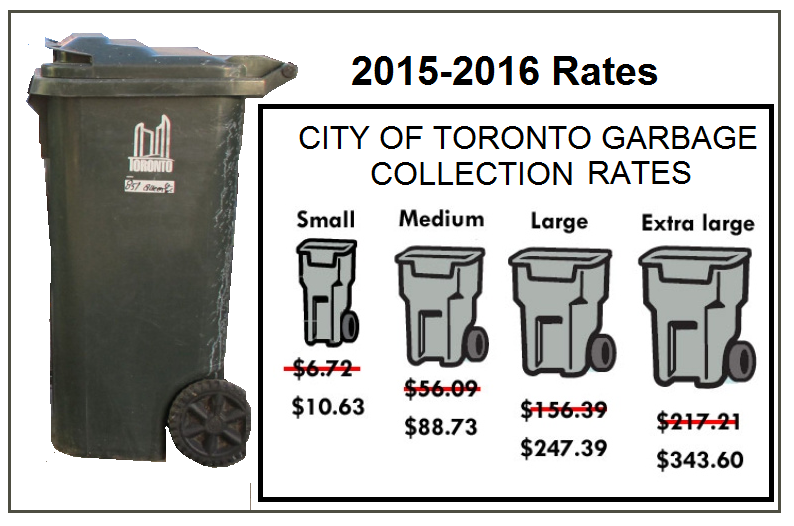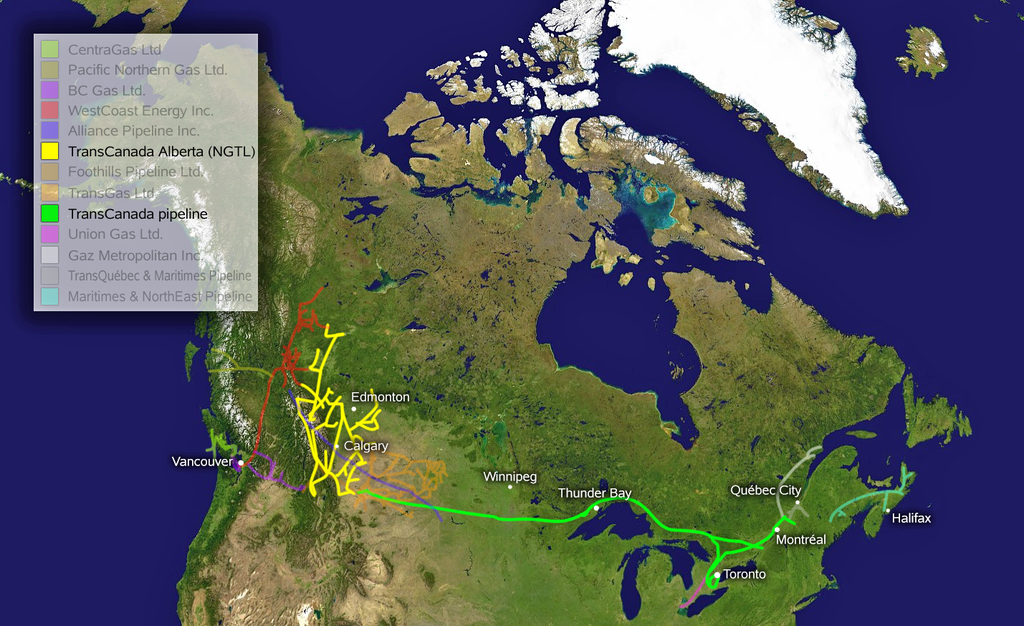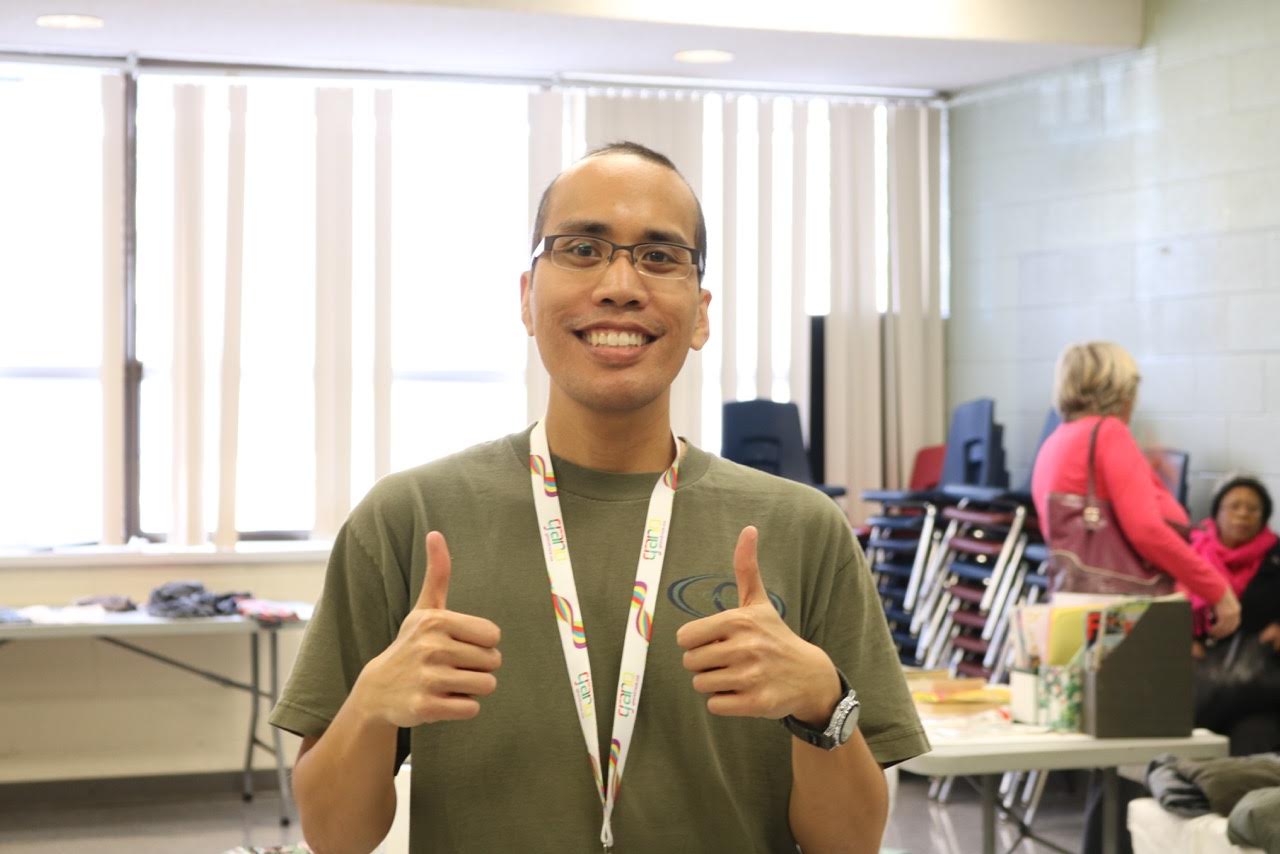
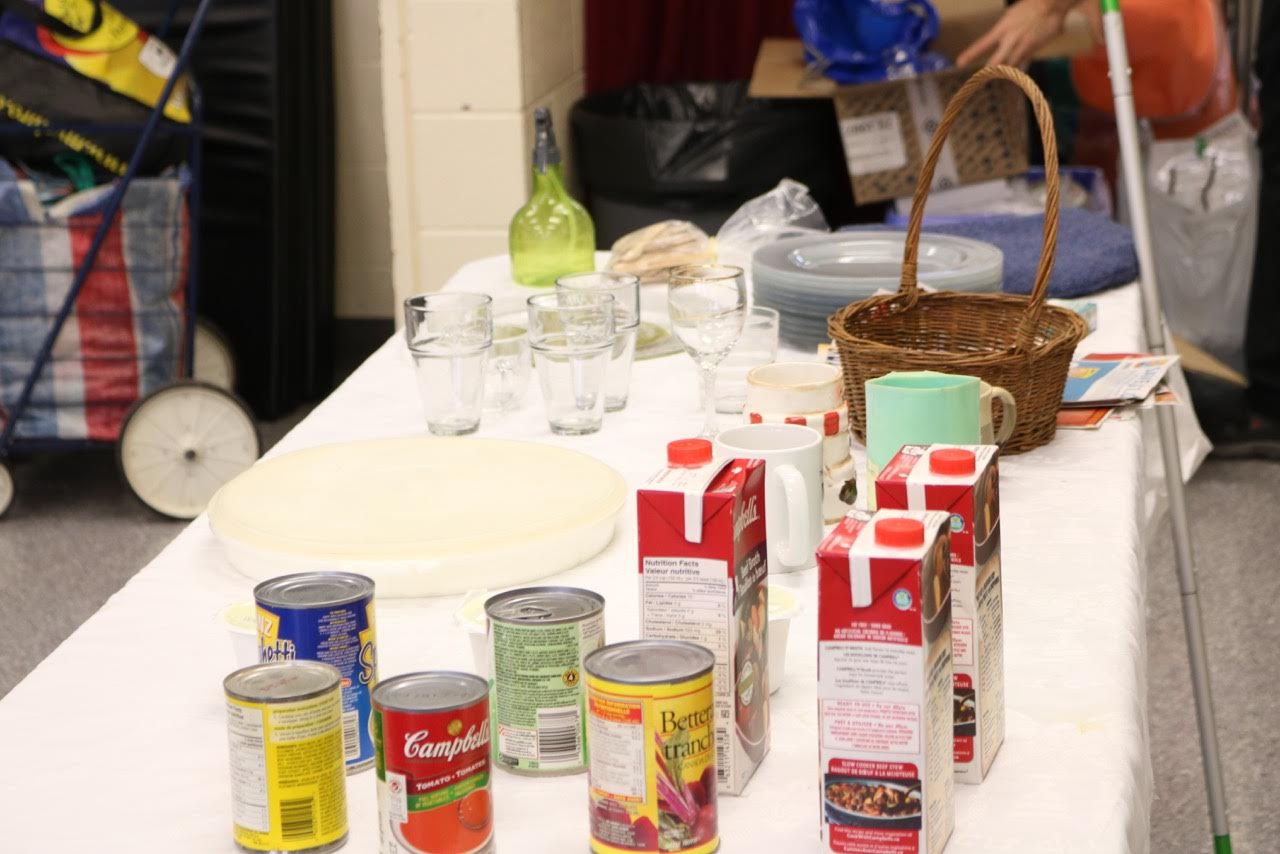
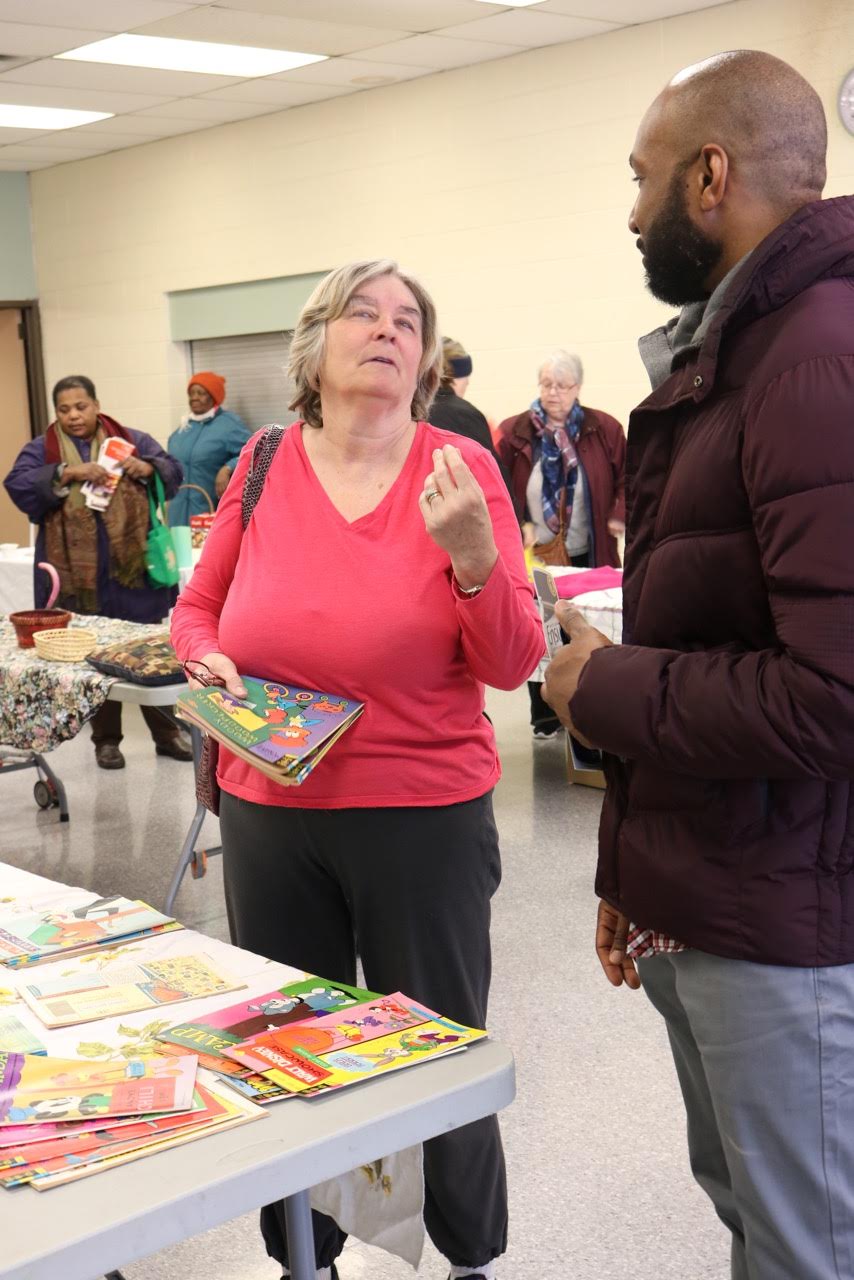 Photo Credit: Tahoy James
Photo Credit: Tahoy James
YUM farmers market @ York University
Students and staff came to check out the YUM farmer's market outside the Scott Library at York University on Thursday March 31st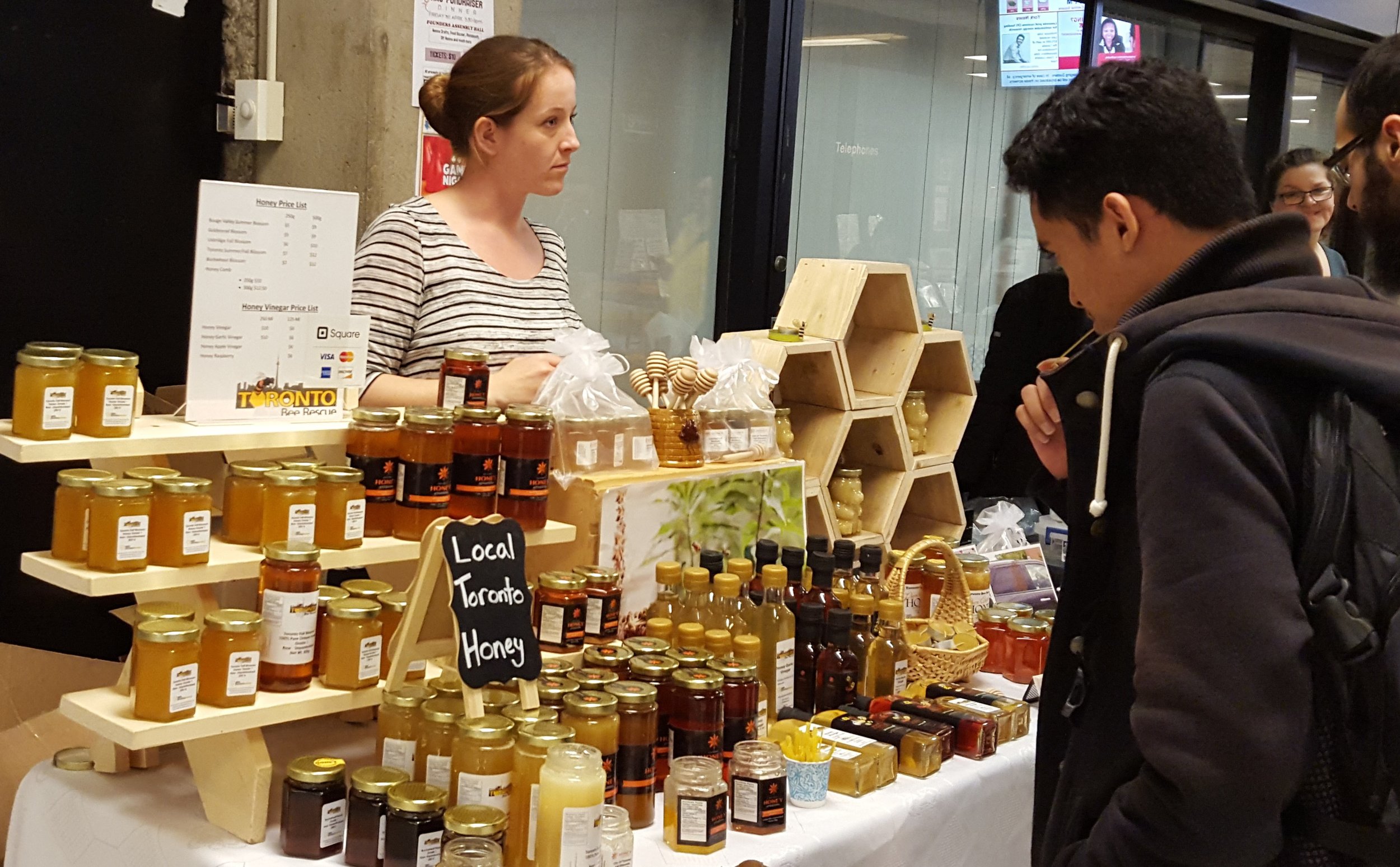
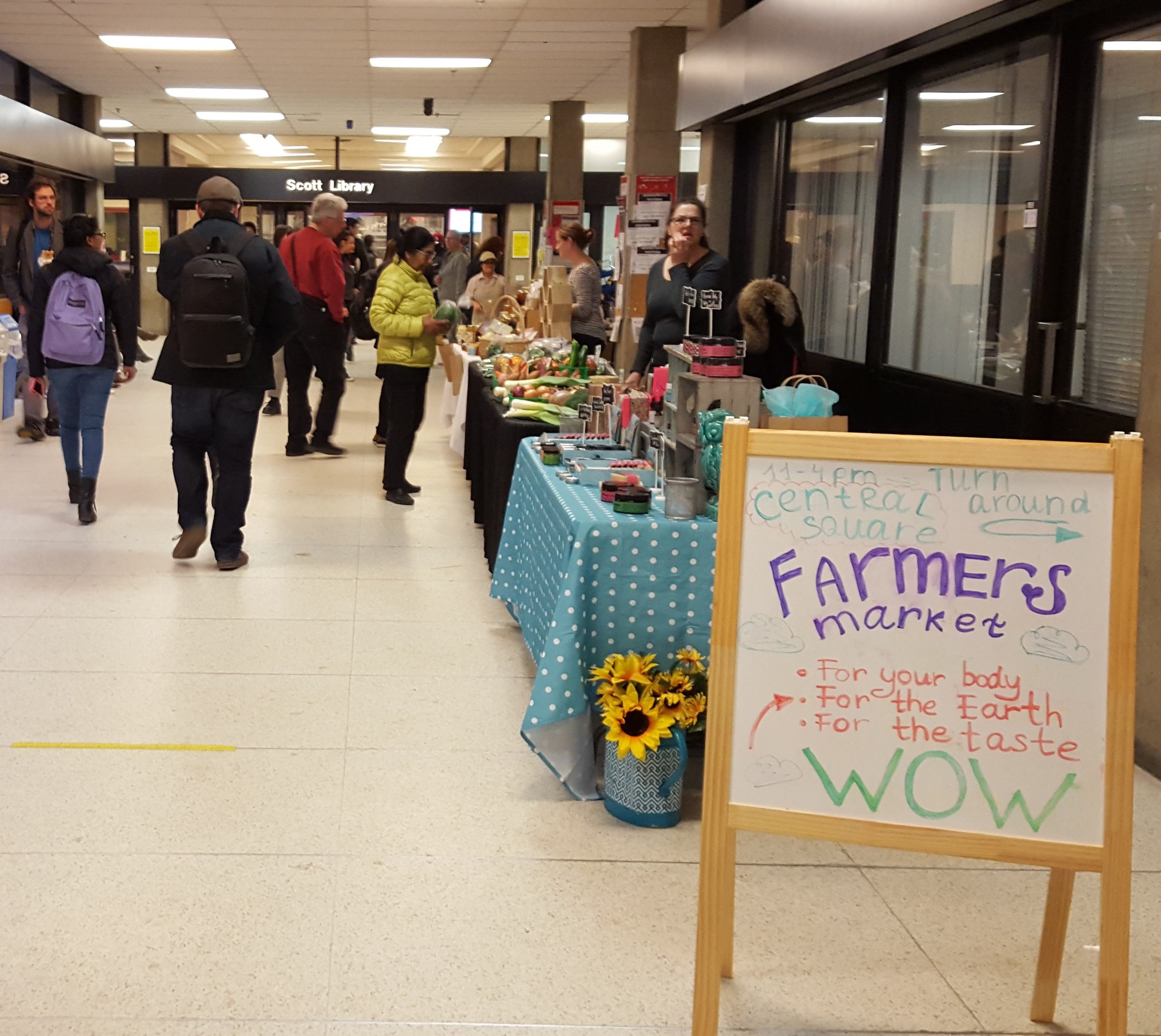
Everything is Free at the North York Really Really Free Market
If you happened to be hanging around the Driftwood Community Center on January 31st, you likely would have stumbled across what appeared to be an indoor Garage Sale.
What was actually going on, was the second North York Really Really Free Market. Downsview residents joined together at the community center with things that they didn’t need any more and left with a few things that they did.In hosting or attending a Really Really Free Market, or RRFM for short, the Downsview community was became a part of what is now a global movement. The RRFM movement began with markets being hosted in both Miami, Florida and North Carolina in 2003. Since then different markets have been hosted in places like Washington, Minneapolis, Russia, England, New Zealand and Toronto just to name a few.
The whole idea of the Really Really Free Market is based on the idea of a gift economy, in other words, you don’t need to give to get anything. You show up with items that are no longer needed in the hopes that someone else does. Or you can show up, look around and see if there is anything you need. It is also common that people show up to offer services or skills provided for free. These can be things like sewing skills, bands show up to play music, people giving out free massages or jokes.
The point of the markets is to encourage an anti-capitalist market system. Of course this sentiment is not surprising given that part of the original organizers of the movement were anarchist groups. You don’t have to be an anarchist, though, to be a fan of getting a bunch of free stuff and decluttering your own space!
The last North York RRFM happened in November and hopefully there will be another springing up in a month or so as the weather heats up. This is something to watch out for because the more people who show up to participate in an event like this, the more there is to offer and enjoy. As a sort of anti-establishment movement, it really does rely on the participation of others to make it as great as possible. So be sure to keep an eye out for the next one, it will be posted on our events page as soon as we hear any news of it at: www.downsviewadvocate.ca/events
Want to save some money and help the environment too?
You can do it by trading in your garbage container.
The entire system is designed to encourage you to pay less. After the great garbage debate of the 1980s, when our landfill site in Vaughn was filled up, Toronto Council searched long and hard for a place to put this city’s garbage. At one point we were shipping it to Michigan. When the city finally acquired its present site near London, Ontario, Toronto council realized that unless we could reduce the trash going to landfills we would very soon be looking for another dump and that was becoming increasingly harder and more expensive to do.That’s when we switched the present user pay system.
Now the less garbage you generate the less money you pay on your utility bill. To make it easier the city has been slowly adding more and more materials to the re-cycling stream. The recycling (blue bin) is free; wet waste (green bin) is free; you only pay for trash (grey bin). The difference between an extra-large grey bin and the smallest bin is $332.97. Just trading down from a large bin to a medium one will save you $158.66.
How do you do it? Easy. Call 311; give them your name and address and within two weeks the city will deliver the new bin to your home, remove the old one and reduce your utility bill. Just one warning; trading to a smaller bin is free but if you try to trade back up to a larger bin not only do you pay the higher utility bill but you pay a trade up fee of $21.22.
Happy Recycling!
The problem with a free ride
I am not a fan of Uber. In fact, the more I come to understand the concept of what Uber is, the more I dislike Uber, but let me explain why.
I was at the corner of Bathurst and Sheppard not too long ago. I went there to meet a friend for a coffee. And as I pulled into the coffee shop, there was this tent set up with this little table. And the roof of the tent said Uber. The tent had some four or five young people, and there was this young woman, very bubbly. She was recruiting people for Uber.
But I sat there for a few minutes, and imagine this: they were offering you a job and free gas! So I thought to myself “wow, how does it get better than that? Here they are on street corners offering you a job! And free gas as well!”
Well, it then dawned on me that Uber is no more than an app based recruitment agency! That is really their function. That is at the core of who they are.
You know what the lifespan of an Uber? Three months. And the wage? $11.00 per hour (Source: http://citypaper.net/uberdriver/) . That’s not a job. As a worker, you are better off delivering pizzas or working at Wal-Mart. More job security and better pay.
You know who the real winner in all of this is? It’s not even the consumer. Uber only cares about the bottom line. Cases like a man who got charged over $1000 for a 40 minute ride are not the exception (Source: http://montreal.ctvnews.ca/uber-customers-taking-legal-action-for-expensive-new-year-s-eve-rides-1.2729078). The winner is Uber. It’s the recruitment agency. They want to monopolize the industry so that they can charge whatever they want. When they can they try to gauge employees and consumers. If the competition was gone, your Uber ride would go through the roof.
For the workers, the drivers, they already had a tough time. There’s shift drivers, there’s agents, there’s brokers, there’s license-plate owners and people who own cars, it was never a playing field. The drivers were overworked and not well paid in general. Uber is no better and no different than any temp agency, but they are not even at the bad boss level. A bad boss may want to fire you without reason. Uber claims they have no employees driving cars. That they are just an app. What drivers get from this deal is little money, no future, and a little free gas. They end up paying for the vehicle, the insurance and yes, they pay for the gas too.
The truth behind Line 9 in Downsview
Line 9 is part of the controversial Energy East Pipeline and runs from Sarnia to Montreal.
Entering Downsview from a point near Eglinton and Hwy 427, Line 9 runs north-east to north of Hwy 400 and Finch Ave. Then it runs east through metro.
Line 9 is a quarter inch thick steel pipe over 40 years old, originally built for natural gas. It carries a toxic carcinogenic, corrosive and explosive mix of crude oil, imported diluents and benzene. The newly revised "Line Rules and Regulations Tariff" passed and will also allow transportation of a substance known as "dilbit." Unprocessed, bitumen is a solid and cannot flow in pipelines, bitumen will be mixed with another fossil fuel product called "diluent" -which is imported into Canada. This mix is what makes dilbit and is toxic to the human central nervous system.
In 2015, while government representatives at the critical Paris Climate Conference were all declaring their support for ending fossil fuel usage to save our planet, Canada through Energy East's Line 9 began adding 32 million tons of CO2 per year to the atmosphere.
Enbridge cite studies tells us Line 9 is safe from corrosive elements. Cornell University in Ithaca, New York, found that between 2007 and 2010 pipelines carrying dilbit had a spill-rate three times higher than pipelines carrying conventional crude.
Oil sand products have a higher sulfur and a higher acidic content than conventional crude oil and those properties could explain its increased corrosive nature. According to CTV's W5, there have been at least 35 spills associated with the pipeline. Some of these haven’t even been reported to the communities they affect and parts of Line 9 have been exempted from the hydrostatic testing required in other sections.
What would a spill near Lake Ontario mean for the water supply of millions of people? What are the risks for York University students and Downsview residents living right on top of the pipe?
"Social licence is more important than ever. Government may be able to issue permits. But only communities can grant permission,” said Justin Trudeau on pipelines and energy projects. That's strange…I do not recall anyone asking us for pipeline permission.
As part of Toronto's 2014 submission to the National Energy Board, an excerpt from the Supreme Court of Canada stated that "municipalities are trustees of the environment", and that as the level of government "being closest to the people, should be empowered to exceed, not lower, the national norms". This was part of a precedent-setting 2001 decision in favour of municipalities’ taking control of their cities.
Torontonians are being forced to risk their safety in order to support out of province jobs in a fading planet killing fossil fuel era. As Stanford's professor Mark Z. Jacobson tells us: renewable energy can completely replace fossil fuels and their CO2. Only the politics of entrenched interests is in the way.Canada could commit to becoming a leader in clean energy and be a part of a Green Marshall Plan currently being advocated for the planet.
There is no amount of regulation, legislation or consultation that will 100% guarantee a pipeline disaster just won't happen.
Call your Mayor, your city council member and your MP. Stop Line 9!
ICC International Women's Day Seminar
To celebrate International Women's Day the Iranian Canadian Congress' Cultural Committee and the Iranian Women's Association of Ontario, led a discussion about Iranian Women in Cinema. The discussion was held on March 6th at the North York Public Library and featured Dr. Khatereh Sheibani a professor from York University.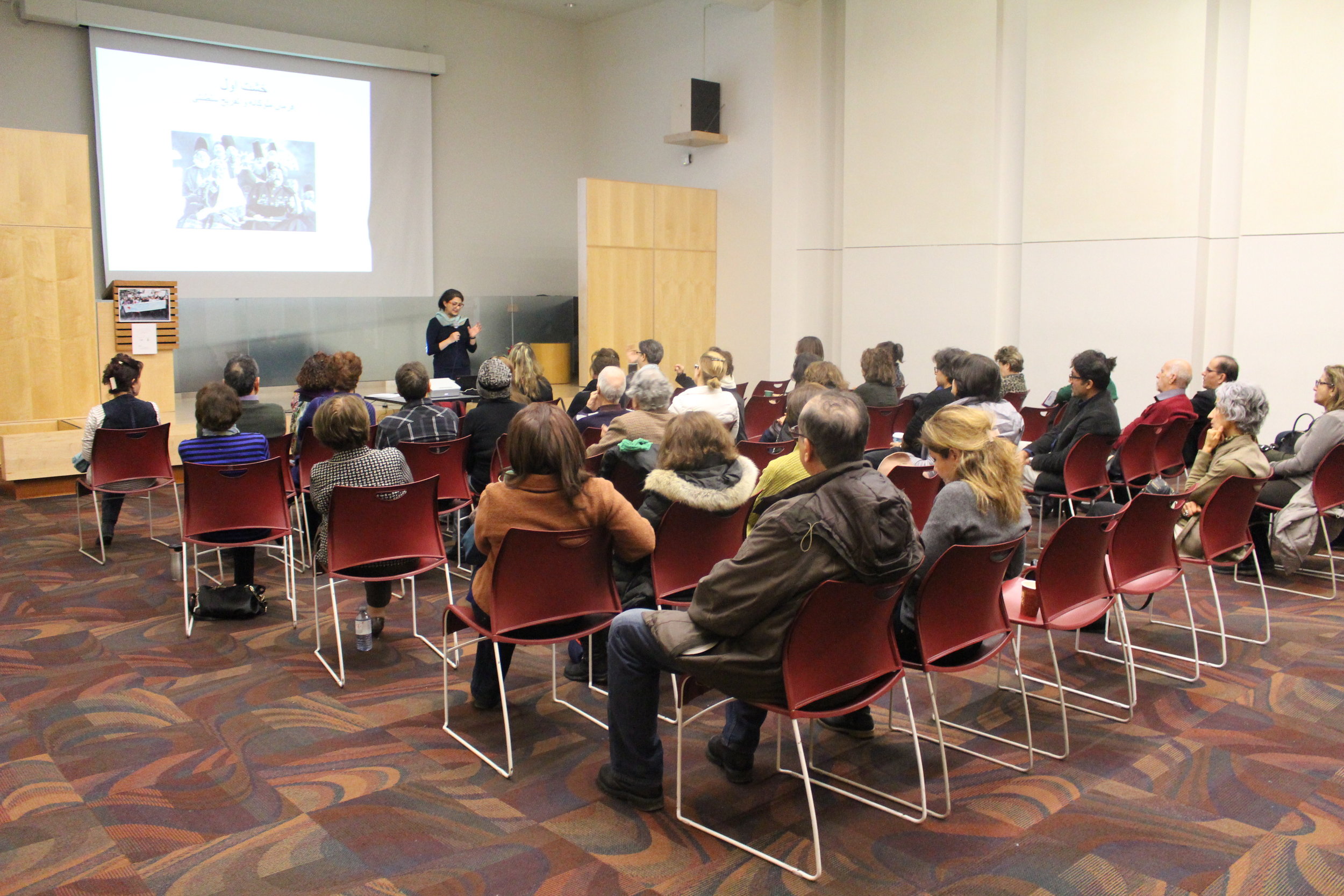
The Power of Parents
Many times parents are convinced that they are sending children to school to “get” an education.The reality is that children are learning wherever they go and whomever they are with, therefore all things (whether good or bad) contribute to their education.
Today social media is a huge influence on children and has even been shown to impact how children write and speak. Shifting our views helps to develop critical thinking and adds to our creative options and improves our problem solving skills in social environments, like school.
A simple action, such as taking the time to communicate with our kids about their school day, can positively improve their (and subsequently your) communication skills. These things may sound insignificant but can have a huge long-term effect.
Another extremely powerful way to play a positive role in your our kids’ lives is by becoming actively involved with the school they attend. Many parents do not realize just how important it is to take the time to be in the school and get to know the principal, the teacher and their teaching philosophy.
Teachers are essential figures that can help your child develop critical enquiry skills and foster a sense of confidence. However, they are also people who appreciate knowing and learning about the background of the child they are teaching on a daily basis. Parents are the first teachers of their child and it is important to continue to have an active part in your child’s learning by partnering with the teacher to support what the child is learning and extend that learning outside of school.
Even if homework can be difficult for parents to understand, simply asking the child if they have homework and encouraging them to do their homework in a quiet place and for a decent amount of time is really effective. Then checking the homework to make sure it is completed and done neatly will help a child see that their parents are invested in what they do. The child will begin to develop a routine of doing homework because they expect their parents to check it on a regular basis.
Parents need to recognize the power they have to help their child be successful and how important parents are to the school they have chosen to help educate their children. If parents work together and have their voice heard, by joining the parent council, attending parent-teacher interviews and parent conferences, schools can only get better. Parents are the gateway to ensuring a better education for their child by being an integral part of the school’s culture.
GET INVOLVED!
Nutritional alternatives for low-income households
Low-income families in the Downsview community have been overwhelmed with the rising costs of fresh fruits and vegetables, and the prices are only expected to get increase.
According to the University of Guelph’s Food Institute, the average Canadian family spent an additional $325, per month, on food in 2015. The prices of food are expected to rise another four per cent, which means families will likely spend an extra $345 on their groceries in 2016.
Since the majority of fresh fruits and vegetables in Canada are imported, the prices are vulnerable to Canada’s devaluing dollar. But there is a solution for low-income households insists Dr. Carol Greenwood, Senior Scientist at Baycrest Health Sciences and Professor of Natural Sciences at the University of Toronto.“People need to feel more comfortable consuming frozen and canned fruits and vegetables because they are actually healthy. They may not have the same taste or texture, but we should move over to these alternatives in the midst of the rising food prices.”
Dr. Greenwood explains that fresh and frozen produce are very close in the amount of nutrients they contain as they both experience loss through processing. Our frozen fruits and vegetables are picked when they are peaked and optimal then frozen and processed right away. Our fresh fruits and vegetables are picked under ripe to be transported and distributed amongst Canadian grocery stores. Both methods experience a loss of nutrients.
When picking out canned food, Dr. Greenwood states, “Do not buy canned fruits with added sugar or canned vegetables with added salt. Make sure you read the labels and go for sugar and sodium free.”She also suggests that we “go back to our roots” when Canadians did not have as many food options in the winter months they consumed storage crops like cabbage, carrots, brussel sprouts and potatoes –which are all reasonably priced year-round.
“We [seniors] need to go back to our youth and use the recipes our moms used to feed us,” she said.Low-income earners, specifically seniors, should not skimp away from consuming all the necessary proteins and nutrients that they need to continue living a healthy life. Dr. Greenwood advocates moving away from expensive meats and poultries and instead getting protein from eggs, beans and lentils –all high-quality items that are inexpensive.“Since this year is the [United Nations] Year of the Pulses [a movement to consume legumes as a primary source of protein] we should really consider incorporating more beans and lentils in our meals instead of meat,” suggested Greenwood.
To keep a budget and still have nutritional meals, Dr. Greenwood emphasizes that families shop the sales, eat foods that are in season, eat locally grown food and reduce our food waste [Canadians throw out more than $1,000 worth of food that goes bad or stale, per year.]
Although the cost of food and living has risen substantially there are many budget-friendly alternatives, like frozen and canned foods, that will keep families and seniors healthy and thriving.
Physician assisted death is coming to Ontario –are we ready?
On February 6, 2015, the Supreme Court ruled that physicians could assist people in ending their lives.The government was given one year to change the law so that it would conform to the ruling. The prior Conservative government avoided the issue, and the new government asked for an extension. The Court has given it until June 6, 2016.
Presumably the new law will clarify who, in addition to doctors, is allowed to assist patients’ wishes for a hastened death. However, Health Care is the responsibility of the Provincial Government, and Queen’s Park has to regulate the delivery of this service to Ontarians.
Even without the distraction of an election campaign, our province has provided limited leadership. It has relied on the College of Physicians and Surgeons of Ontario (CPSO) to draft a policy for its members, which although detailed, does not follow some important expert recommendations and may lead to delays in access for some patients.The Ontario College of Pharmacists has prepared a preliminary document for its members but it is not sufficient to guide practice. The College of Nurses website simply reminds its members that assisted death is illegal and asks them to watch for changes in legislation.
Similarly, the province has been silent on how institutions will respond to a request for assisted death, leaving each hospital, nursing home and other facilities to expend considerable resources to formulate such policies in parallel. And it does not appear that they have made much progress.
In Downsview, a search of “Assisted Death” on the Humber River Hospital website leads to a page entitled “What You Need to Know About Palliative Care”, which was “ Last Revised: October 2011”. There is no mention of assisted death nor that of the process patients must follow.
This makes sense, because assisted death has very little to do with Palliative Care. The latter is a compassionate approach to providing comfort and support to patients diagnosed with an incurable illness, helping them to maximize quality of life.
To underscore this point, the largest group of doctors that provide home palliative care in Toronto has no physicians who work in Downsview and who are prepared to offer assisted death for their patients. Fortunately, the organization has been preparing for a change in the law since before the Supreme Court even heard the case.
“Assisted death is not a part of what I can do as a physician, and it certainly is not a part of Palliative Care”, said one of these doctors on condition of anonymity. However, he added that “we respect the court decision and we respect the rights of our patients.”
His organization will ensure that all of his patients will have access to a referral in the event that they choose assisted death, using a reporting system.
The right to assisted death is no longer up for debate. The Province could ensure facilitated access for all Ontarians by instituting mandatory reporting, a central referral process, and providing direction to its professionals and institutions.
Does the government have the will to show leadership on this issue?Let us know what you think!




